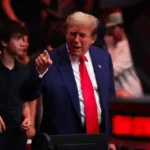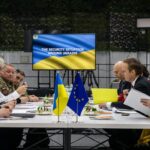The Peace Formula, consisting of 10 points, was first presented by the President of Ukraine, Volodymyr Zelenskyy, in November 2022 during a speech to the G20 countries. Since then, the Ukrainian side has held a series of meetings with delegations from various countries at the level of national security and foreign policy advisors. These meetings, which took place in Jeddah, Davos, and Malta, were led by the Head of the Presidential Office, Andriy Yermak.
Significance of the Summit
It’s worth noting that this was the first meeting at the level of state leaders, making this Global Summit historically significant. The number of participants remained a secret until the last moment, with the list being published only a day before the Summit.
Out of the 160 invited countries, 92 responded, with 57 represented at the highest level. The rest sent their ministers or ambassadors. Notably, representatives from China did not attend, which impacted the overall attendance.
Key Players and Absences
However, other important geopolitical players were present, including Saudi Arabia, India, and the United Arab Emirates. Despite the agenda including nuclear safety, IAEA Director General Rafael Grossi declined to attend, citing a desire to avoid mixing political aspects with the technical work of the agency.
Russia was not present at the first Peace Summit due to Ukraine’s stance. Furthermore, the aggressor country showed no interest in participating in the conference in Bürgenstock. According to Swiss Foreign Minister Ignazio Cassis, Russia declined potential participation back in January, labeling the event as “pro-Ukrainian rather than an attempt to initiate a peace process.”
The UN, the Ecumenical Patriarchate, the Holy See, and Brazil attended the Summit as observers.
Ukraine’s Perspective and Objectives
The Ukrainian side emphasized that representatives from five continents were present at the meeting. President Zelenskyy described the Peace Summit as “inaugural,” noting that the goal of the first session was not to immediately end the war, especially given the absence of the aggressor country, which is essential for a ceasefire.
This Summit served more as a platform and foundation for dialogue, particularly with countries from the so-called Global South, as Western partners continue their steadfast support for Ukraine.
Key Topics Discussed
Three main issues were discussed:
- Ensuring nuclear and food security,
- Returning deported Ukrainian children,
- Exchanging prisoners of war under the formula “all for all.”
Roland Freudenstein, founder of the Brussels Freedom Hub and former head of the GLOBSEC think tank, commented to Channel 24 that the first Summit was a success for Ukraine. He noted that the Peace Summit was never intended to achieve a ceasefire agreement or anything more substantial. Instead, it was part of efforts to send two messages to the Global South. First, Ukraine’s struggle for survival is fundamentally an anti-colonial, anti-imperial fight against Russia. This argument is best made by Ukrainians themselves, rather than by former colonial powers such as the USA, the UK, or France.
Secondly, Freudenstein highlighted that one of the Summit’s achievements was the signing of the final communique by 80% of the participating countries.


